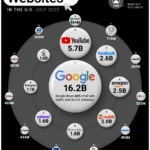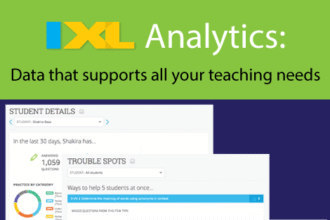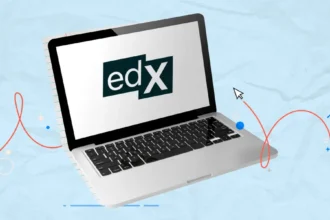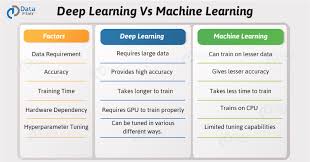In an era defined by rapid technological advancement and an insatiable hunger for knowledge, online education has transcended its initial perception as a mere alternative to traditional learning. It has blossomed into a global powerhouse, a dynamic ecosystem that is not just reshaping how we learn but is also a formidable economic force. From free online learning modules offering foundational knowledge to rigorous CPA online learning certifications and cutting-edge AI courses online free, the digital realm has democratized access to expertise on an unprecedented scale.
Today, as you scroll through your feed or ponder your next career move, consider this: the online learning platforms you encounter are part of a multi-billion dollar industry experiencing explosive growth and constant innovation. This isn’t just about remote classes anymore; it’s a sophisticated business model driven by evolving learner demands, technological breakthroughs, and strategic investments.
As a top blog writer in the EdTech space, I’ve seen firsthand the seismic shifts occurring daily. New platforms emerge, existing ones innovate with features like adaptive learning powered by machine learning, and the very definition of a “credential” is being rewritten. This comprehensive guide will dissect the colossal market size of online education, explore the most compelling trends shaping its future, and illuminate the vast opportunities awaiting individuals, institutions, and entrepreneurs alike. Prepare to delve deep into a sector that is not just education, but big business, poised for even greater expansion.
The Unprecedented Growth of Online Education: A Deep Dive into Market Size
The journey of online education from niche offering to mainstream phenomenon is a testament to its inherent value and adaptability. Its market size has swelled dramatically, propelled by a confluence of factors, making it one of the most compelling sectors for investment and innovation.
Historical Context & Catalysts: From Niche to Necessity
For decades, online learning was primarily the domain of distance learning programs, often perceived as a less prestigious alternative to on-campus education. Early iterations, while foundational, lacked the interactive tools and robust infrastructure we see today. However, the seeds of transformation were sown with the advent of the internet, leading to platforms like Coursera, edX, and Udemy gaining traction in the early 2010s, offering free online courses and specialized programs.
The truly seismic shift occurred more recently. The global pandemic of 2020 served as an unparalleled catalyst, forcing educational institutions worldwide to pivot overnight to online distance learning. This abrupt transition, though challenging, undeniably accelerated the adoption of digital learning tools and methodologies. It demonstrated the resilience and scalability of online education, pushing it from a convenient option to an absolute necessity. Post-pandemic, while some learners returned to traditional settings, a significant portion, having experienced the benefits of online learning such as flexibility and accessibility, continued their digital journey. This normalization has solidified online education’s place as a permanent and integral part of the global learning landscape.
Current Market Valuation & Future Projections
The numbers speak volumes. The global online education market is not just large; it’s experiencing exponential growth. According to various market research reports:
- Current Valuation: In 2023, the global online learning market was estimated to be valued at approximately $300 billion to $400 billion USD, depending on the precise scope of services included (Statista, Grand View Research, HolonIQ are excellent sources for these figures, often updated quarterly).
- Projected Growth: Analysts consistently forecast a Compound Annual Growth Rate (CAGR) of 15-20% or even higher over the next five to ten years. This would see the market potentially reaching $1 trillion USD by 2030.
- Driving Factors: This impressive growth is fueled by increasing internet penetration, a rising demand for upskilling and reskilling in a rapidly changing job market, the cost-effectiveness compared to traditional education, and the continuous innovation in EdTech solutions.
This isn’t merely an academic exercise; it represents massive investment, job creation, and a fundamental restructuring of how knowledge is acquired and disseminated globally.
Key Segments Driving Growth
The vast online education market isn’t monolithic; it’s comprised of several thriving segments, each contributing significantly to the overall expansion:
- Higher Education & Degree Programs:
- Many traditional universities now offer fully online degrees and courses, from undergraduate to doctoral levels. Platforms like Unimib Segreterie Online or Flinders Learning Online exemplify how established institutions integrate digital learning. This caters to working professionals, international students, and those seeking flexibility. The rise of online learning college programs and specialized online learning programs through university extensions is a major driver.
- K-12 & Supplemental Learning:
- Beyond pandemic-induced remote schooling, online platforms for younger learners are booming. Scholastic Learning Zone, IXL Learning, and various online learning games for 5 year olds provide supplemental education, tutoring, and engaging content. This segment focuses on personalized learning, homework help, and early skill development.
- Corporate & Professional Development (A High CPC Goldmine):
- This is arguably one of the most lucrative and high-growth segments. Companies are investing heavily in corporate training, upskilling, and reskilling their workforces to stay competitive.
- Certifications: The demand for professional certifications is skyrocketing. Think CPA online learning for accountants, project management certifications, or specialized tech certifications. CPA Australia also leverages online learning for its professional development requirements.
- High-Value Skills: Courses in AI courses online free, machine learning, deep learning, learning Python, and other data science or programming languages are highly sought after. Platforms like LinkedIn Learning, Codecademy, and O’Reilly Online Learning cater specifically to this professional audience, offering skills that directly translate to career advancement and higher salaries.
- Language Learning: With globalization, language learning online is big business. Platforms offering English learning online, learning Spanish online, or tools for Arabic to English translation online and Urdu to English translation online are tapping into both personal and professional needs.
- Lifelong Learning & Hobbies:
- The desire for continuous learning extends beyond career needs. Millions seek free online learning platforms or affordable courses for personal enrichment, new hobbies, or general knowledge. From photography to cooking, these courses contribute to the overall vibrancy of the online learning hub.
- Test Preparation & Tutoring:
- Whether it’s for university entrance exams, professional licenses like the learning license test online, or academic support, online platforms offer targeted preparation and one-on-one tutoring services.
- Academic Support: Specialized platforms like Learning Test Online or those offering maths online help students master difficult subjects.
This diverse landscape underscores the pervasive influence of online education across all age groups and professional stages. It’s a market that understands that in the 21st century, learning is not a phase, but a continuous journey.
Dominant Trends Shaping the Online Learning Landscape
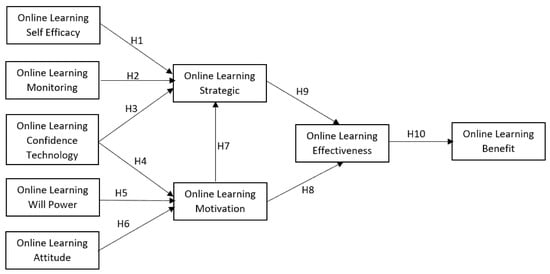
The online education market is not static; it’s a rapidly evolving domain driven by technological innovation and shifting pedagogical philosophies. Staying abreast of these trends is crucial for anyone involved in this space, from content creators to investors.
Personalization & Adaptive Learning: The AI Revolution
One of the most transformative trends is the move towards hyper-personalized learning experiences, largely powered by Artificial Intelligence (AI) and machine learning. Gone are the days of one-size-fits-all digital courses. Today’s cutting-edge online learning platforms are increasingly leveraging AI to:
- Tailor Content: AI algorithms analyze a learner’s progress, strengths, weaknesses, and learning style to recommend customized content, exercises, and pacing. This means if you’re learning Python online, the system can identify specific coding concepts you struggle with and provide additional resources, rather than simply moving on with the class.
- Adaptive Assessments: Assessments are no longer just about grading; they’re diagnostic. Adaptive tests adjust difficulty based on performance, providing a more accurate measure of comprehension and directing learners to areas needing improvement.
- AI Tutors & Chatbots: Virtual assistants provide instant feedback, answer common questions, and even guide learners through complex problems. This mimics the one-on-one interaction of a human tutor, making my online learning experience more engaging and effective.
- Predictive Analytics: AI can predict learner success rates or identify students at risk of dropping out, allowing for early intervention.
This trend addresses a key disadvantage of online learning: the lack of immediate, personalized feedback common in traditional classrooms. With online machine learning, the digital classroom becomes more responsive and effective than ever before.
Micro-credentials & Skill-Based Learning: The Future of Employability
The traditional four-year degree is being complemented, and in some cases challenged, by the rise of micro-credentials and skill-based learning. Employers are increasingly valuing demonstrable skills over generalized degrees, especially in fast-evolving fields.
- Focused Skill Acquisition: Learners are seeking specific, job-relevant skills that can be acquired quickly and affordably. Instead of a full computer science degree, someone might pursue a specialized certificate in deep learning or data analytics.
- Stackable Credentials: Micro-credentials are often “stackable,” meaning individuals can accumulate several smaller certifications to build a comprehensive skill set or even work towards a larger degree over time.
- Industry-Recognized Certifications: Professional bodies and tech giants are creating their own certifications (e.g., Google IT Support, Microsoft Azure, AWS certifications), which are highly valued in the job market. This is evident in the popularity of courses designed to prepare individuals for CPA online learning exams or specialized AI courses online.
- Partnerships: Online learning platforms like Coursera and edX are partnering with universities and corporations to offer professional certificates and specializations that carry significant weight in the job market, directly addressing the demand for online education learning that leads to tangible career outcomes.
This trend aligns perfectly with the need for lifelong learning and rapid reskilling in a dynamic global economy.
Blended Learning & Hybrid Models: The Best of Both Worlds
While fully online learning offers flexibility, many recognize the value of face-to-face interaction and hands-on experience. This has led to the widespread adoption of blended learning and hybrid models.
- Integrated Approaches: Blended learning combines online instructional materials and interaction with traditional classroom methods. For example, students might complete modules and quizzes online (online learning system) before attending an in-person workshop or lab session.
- Flexibility & Engagement: This approach offers the flexibility of online resources while retaining the social and collaborative benefits of physical classrooms. It can enhance engagement and provide richer learning experiences.
- Corporate Training: Businesses frequently use blended models, with employees completing online modules for foundational knowledge and then attending in-person sessions for practical application or team-building exercises. This is a common strategy for corporate training and professional development.
The success of Activate Learning Online or Solent Online Learning often hinges on their ability to integrate digital tools with robust support systems, ensuring learners get the most out of their educational journey.
Gamification & Immersive Technologies: Learning Through Play
To combat potential learner disengagement in online environments, gamification and immersive technologies like Virtual Reality (VR) and Augmented Reality (AR) are becoming increasingly prevalent.
- Gamified Elements: Incorporating elements like points, badges, leaderboards, progress tracking, and challenges makes learning more interactive and motivating. Popular platforms like Kahoot, Doodle Learning, and IXL (IXL Learning) have perfected this for various age groups and subjects. Even online learning games for 5 year olds are leveraging this trend effectively.
- Virtual & Augmented Reality: VR/AR can create highly immersive and experiential learning environments. Imagine medical students practicing complex surgeries in a virtual operating room or engineering students assembling a virtual engine. While still nascent for widespread adoption, the potential for these technologies to revolutionize online education learning is immense, particularly in fields requiring practical skills.
- Learning Games: Beyond formal education, dedicated learning games and online games (like simulations or educational apps) are a massive market, making learning enjoyable and effective for all ages.
These innovations address the need for greater learner engagement and retention, making online learning a more dynamic and less passive experience.
Global Accessibility & Inclusivity: Breaking Down Barriers
Online education inherently possesses the power to democratize access to knowledge, transcending geographical and socio-economic barriers. This trend focuses on maximizing that potential.
- Bridging the Digital Divide: Initiatives aimed at providing internet access and devices to underserved populations are crucial. Platforms are also designing content that is accessible on low-bandwidth connections and mobile devices, ensuring that online distance learning can reach remote communities.
- Multilingual Content: The demand for language learning online is huge, but also the demand for content in multiple languages or with robust translation features (e.g., leveraging tools like Google Translate or specialized educational translation services). This facilitates learning for non-native English speakers.
- Affordability: Many platforms offer free online courses or subsidized programs, making education accessible regardless of financial status. The growth of free online learning platforms like Alison Online Learning is a testament to this demand.
- Accessibility Features: Ensuring content is accessible for learners with disabilities through features like screen readers, closed captions, and keyboard navigation is becoming standard practice.
The goal is to ensure that quality online learning is a right, not a privilege, fostering a truly global learning community.
Focus on High-Demand Skills: Future-Proofing Careers
The job market is in constant flux, with new skills becoming obsolete as quickly as new ones emerge. Online education is uniquely positioned to respond swiftly to these changes, focusing on high-demand skills.
- Tech & Data Literacy: Courses in learning Python, python learning online, data science, cloud computing, cybersecurity, and AI courses online are consistently among the most popular and career-enhancing offerings. These are prime examples of content that drives high CPC due to industry demand.
- Digital Marketing & Business Acumen: Skills in SEO, content marketing, e-commerce, and digital business strategy are vital across industries.
- Soft Skills: Communication, critical thinking, problem-solving, and leadership are often embedded within or offered as standalone modules, recognizing their importance alongside technical expertise.
- Partnerships with Industry: Many online learning platforms collaborate directly with industry leaders to develop curricula that are directly relevant to current job market needs. This often leads to specific training programs or certifications that can include topics like what is machine learning or deep learning applications.
This trend empowers individuals to continuously upskill and reskill, ensuring their relevance in an ever-evolving professional landscape.
Unlocking Opportunities: Where Innovation Meets Demand
The burgeoning online education sector presents a wealth of opportunities across various stakeholder groups. Its dynamic nature means that innovation is not just encouraged but essential for success and growth.
For Individual Learners: Empowerment and Advancement
For individuals, online education is a powerful tool for personal and professional growth, offering unparalleled benefits of online learning:
- Career Advancement & Skill Acquisition: Learners can acquire new skills (e.g., learning Python, AI courses online free, CPA online learning) or specialize in niche areas like deep learning to accelerate their careers, qualify for promotions, or transition into new fields. LinkedIn Learning is a prime example of a platform designed for professional development.
- Flexibility & Accessibility: The ability to learn anytime, anywhere breaks down geographical and temporal barriers. This is particularly beneficial for working professionals, parents, or individuals in remote locations. Online learning NSW or online learning QLD Health illustrate how localized digital learning can serve specific regional needs.
- Affordability: Compared to traditional institutions, many online learning platforms offer more cost-effective options, including numerous free online learning platforms and free online courses, making quality education accessible to a broader demographic.
- Personalized Learning Paths: With adaptive technologies, learners can progress at their own pace and focus on areas relevant to their individual needs, making my online learning experience truly bespoke.
- Global Networking: Online forums and collaborative projects allow learners to connect with peers and instructors from around the world, fostering diverse perspectives and professional networks.
Platforms like Coursera, edX, Udemy, Codecademy, Alison Online Learning, and Learn Direct are critical resources for millions seeking to enhance their knowledge and career prospects. Even niche platforms like Widgit Online for communication support or Languages Online for specific language needs, cater to unique learner requirements.
For Educational Institutions: Expanding Reach and Innovation
Traditional universities and colleges are increasingly embracing online learning to remain competitive and relevant:
- Expanded Reach: Online programs allow institutions to attract students globally, diversifying their student body and increasing enrollment numbers beyond geographical limitations. Online learning agreement Erasmus and Mobility Online demonstrate internationalization strategies.
- New Revenue Streams: Offering specialized online learning courses or certifications can create significant new revenue streams, especially in high-demand fields.
- Global Collaboration: Online tools facilitate research collaborations, guest lectures, and joint programs with institutions worldwide.
- Cost Efficiency: While initial setup can be costly, online delivery can reduce long-term operational costs associated with physical infrastructure.
- Innovation in Pedagogy: Developing online content pushes institutions to innovate their teaching methods, often leading to more engaging and effective learning experiences that can then be integrated into traditional programs. The College for Adult Learning often specializes in optimizing online delivery for mature students.
Institutions like RWTH Online and TUM Online are examples of how established universities are integrating and expanding their online offerings.
For EdTech Entrepreneurs & Investors: A Fertile Ground for Innovation
The EdTech sector is a hotbed for startups and a magnet for venture capital, offering immense opportunities for those with innovative ideas:
- Niche Platforms: Identifying underserved learning niches (e.g., specialized learning games, or platforms for specific professional certifications) can lead to highly successful ventures.
- Innovative Tools & Technologies: Developing new software for content creation, virtual labs, assessment, or AI-powered tutoring can find a ready market.
- Content Creation & Curation: There’s a perpetual demand for high-quality, engaging content across all subjects, from maths online to advanced deep learning modules. Expert content creators can partner with platforms or launch their own.
- Platform Development: Building robust, user-friendly online learning platforms or improving existing ones (e.g., focusing on analytics, security, or integration capabilities) is a significant opportunity. The race to be the best online learning platform is fierce and profitable.
- Investment Opportunities: With strong growth projections, EdTech offers attractive returns for investors, both in early-stage startups and established companies. This includes exploring disruptive technologies and innovative business models in the “business of online education.”
For Corporate & Government Sectors: Workforce Development and Public Education
Businesses and governments are increasingly turning to online solutions for their training and educational needs:
- Employee Training & Upskilling: Corporations utilize online learning programs to train new hires, update existing employees on new technologies (online machine learning, python learning online), compliance regulations, or improve soft skills. This is often managed through a dedicated online learning center or platform like BayCare Online Learning Center for healthcare or Red Cross Learning Center for specific training.
- Workforce Development: Governments partner with online learning platforms to offer free or subsidized training programs to citizens, addressing skills gaps in the economy and boosting employment.
- Public Education Initiatives: Online resources are vital for public health campaigns, civic education, and disaster preparedness training, reaching a broad audience efficiently.
- Global Competitiveness: Nations are investing in digital literacy and advanced skill training to ensure their workforce remains globally competitive. This often involves large-scale deployment of online learning system across public sectors.
Even within specific organizational contexts, the demand for accessible, flexible training is high, as exemplified by the need for platforms like Evidence for Learning to track and improve educational outcomes.
The Rise of Specialized Platforms: Deepening Expertise
Beyond generalist platforms, a key opportunity lies in specialization. As the market matures, there’s a growing need for platforms that cater to very specific needs:
- Healthcare Education: Platforms offering certifications for nurses, doctors, or allied health professionals, often incorporating simulations.
- Financial Literacy: Courses on investment, personal finance, or specific financial certifications.
- Creative Arts: Niche platforms for digital art, music production, or creative writing.
- Language Acquisition for Specific Professions: Teaching English to doctors, or Spanish to social workers.
- Niche Tech Skills: Dedicated platforms for specific programming languages, cybersecurity, or particular software tools.
These specialized platforms often command higher prices due to the targeted nature of their content and the direct career benefits they offer, further contributing to higher CPC potential.
Challenges and The Path Forward
While the opportunities are vast, the online education sector is not without its hurdles. Addressing these challenges will be crucial for sustained growth and ensuring equitable access.
Digital Divide & Access: Bridging the Gap
The promise of universal access through online learning is often hampered by the persistent digital divide. Not everyone has reliable internet access, affordable devices, or the digital literacy required to navigate online platforms effectively.
- Path Forward: Governments and NGOs must continue investing in infrastructure development, affordable internet initiatives, and digital literacy programs. EdTech companies can design solutions that are mobile-first and bandwidth-friendly.
Quality Control & Accreditation: Ensuring Standards
With the proliferation of online learning courses and providers, maintaining consistent quality and ensuring accreditation for credentials remains a challenge. Not all “certificates” carry the same weight in the job market.
- Path Forward: Robust accreditation bodies specific to online learning are needed. Platforms must prioritize pedagogical excellence, peer review, and demonstrable learning outcomes. Emphasizing partnerships with reputable institutions (e.g., college for adult learning with recognized accreditation) is key.
Engagement & Retention: Keeping Learners Motivated
One of the often-cited disadvantages of online learning is the potential for lower completion rates compared to traditional settings. Maintaining learner engagement and preventing dropout can be difficult without the direct social pressure of a physical classroom.
- Path Forward: Enhanced interactivity, gamification, personalized support (AI tutors or human mentors), collaborative projects, and community building features are essential. Regular feedback and progress tracking can also keep learners motivated.
Technological Infrastructure: Evolving Requirements
The rapid pace of technological change means that online platforms must constantly update their infrastructure to support new features like VR, advanced AI, and large-scale data analytics.
- Path Forward: Continuous investment in R&D, cloud computing, and cybersecurity is paramount. Partnerships with tech providers can help platforms stay at the cutting edge.
Future Innovations: Beyond the Horizon
The future of online education is likely to be even more immersive and personalized:
- Metaverse Education: Imagine learning in fully immersive virtual worlds, interacting with historical figures or exploring complex scientific concepts in 3D.
- AI-Powered Content Generation: AI could soon generate personalized learning materials, lectures, and even full courses based on individual learner needs and preferences.
- Brain-Computer Interfaces (BCI): While speculative, BCIs could one day allow for direct knowledge transfer or highly intuitive interaction with learning content.
- Adaptive Content: Not just adapting the path, but the content itself to a learner’s cognitive state and emotional engagement.
The “learning curve” for these technologies is steep, but the potential rewards are immense.
The Live Pulse of Online Education: Daily Developments
The world of online education isn’t a static landscape; it’s a vibrant, constantly shifting ecosystem. What was cutting-edge yesterday might be standard today, and tomorrow brings entirely new paradigms. This rapid pace of evolution is part of its business appeal, attracting investors and innovators who thrive on change.
Every single day, the online education market witnesses new developments that reflect its dynamic nature:
- New Course Launches: Platforms like Coursera, edX, Udemy, and LinkedIn Learning announce dozens of new online learning courses daily, ranging from free online learning introductions to specialized professional certifications in fields like AI courses online, machine learning, or advanced python learning online. These new offerings cater to emerging industry demands and the perpetual need for upskilling.
- Platform Updates & Feature Rollouts: Major online learning platforms are in a continuous cycle of improvement. Today, you might see an announcement about enhanced AI-driven personalization, a new collaborative tool, improved mobile responsiveness, or expanded language support for learning Spanish online or english learning online. Tools like Doodle Learning or Kahoot regularly update their interactive features to keep learners engaged.
- Funding Rounds & Acquisitions: The EdTech investment space is highly active. News of multi-million dollar funding rounds for innovative startups or strategic acquisitions by larger players (like a major university acquiring a niche online learning platform) is a regular occurrence, signifying confidence in the sector’s long-term growth.
- Partnership Announcements: Universities forge new alliances with tech companies to deliver accredited online degrees, or corporations partner with online learning platforms to develop custom corporate training programs. For example, a new partnership enabling CPA online learning through a globally recognized university might be announced.
- Policy & Regulatory Changes: Governments worldwide continually assess and adapt policies related to online distance learning, accreditation of digital credentials, and funding for EdTech initiatives. This can significantly impact the operational environment for providers.
- Research & Insights: New studies on the effectiveness of blended learning, the impact of gamification, or the psychological aspects of remote education are published daily, contributing to a deeper understanding of benefits of online learning and areas for improvement.
- Global Expansion: Platforms often announce their expansion into new geographical markets, making their online learning programs available to millions more. This could involve translating content into new languages or forming local partnerships.
This “live daily information” isn’t just news; it’s a barometer of the industry’s health and direction. It underscores that online education is not a static product but a living service, constantly evolving to meet the fluid demands of a globalized, knowledge-hungry world. For businesses, this means endless opportunities for market entry and differentiation; for learners, it means an ever-richer, more accessible, and more effective learning experience. The “learning curve” for the industry itself is perpetually upwards, reflecting its boundless potential.
The Enduring Power of Digital Learning
The business of online education is far more than a transient trend; it is a fundamental pillar of the 21st-century knowledge economy. We’ve journeyed through its staggering market size, witnessing its growth from a niche offering to a multi-billion-dollar global phenomenon driven by an undeniable thirst for accessible, flexible, and career-relevant learning.
From the transformative power of AI courses online and machine learning to the practical utility of CPA online learning and language learning online, online education is democratizing access to expertise, fostering continuous professional development, and empowering individuals to sculpt their own career trajectories. The dominant trends — personalization, micro-credentials, blended models, and gamification — are not merely technological fads but strategic advancements addressing the core needs of modern learners and industries.
The opportunities are boundless: for individuals seeking to upskill and redefine their futures, for institutions expanding their reach and innovating their pedagogy, and for entrepreneurs and investors who see the fertile ground in EdTech. While challenges like the digital divide and quality assurance persist, the collective ingenuity of the sector is relentlessly working to overcome them, ensuring that the benefits of online learning are realized globally.
The digital classroom is not just here to stay; it is continually reinventing itself, pushing boundaries, and proving daily that the future of learning is inextricably linked to the power of digital innovation. Embrace it, engage with it, and prepare to thrive in an era where knowledge is just a click away.



